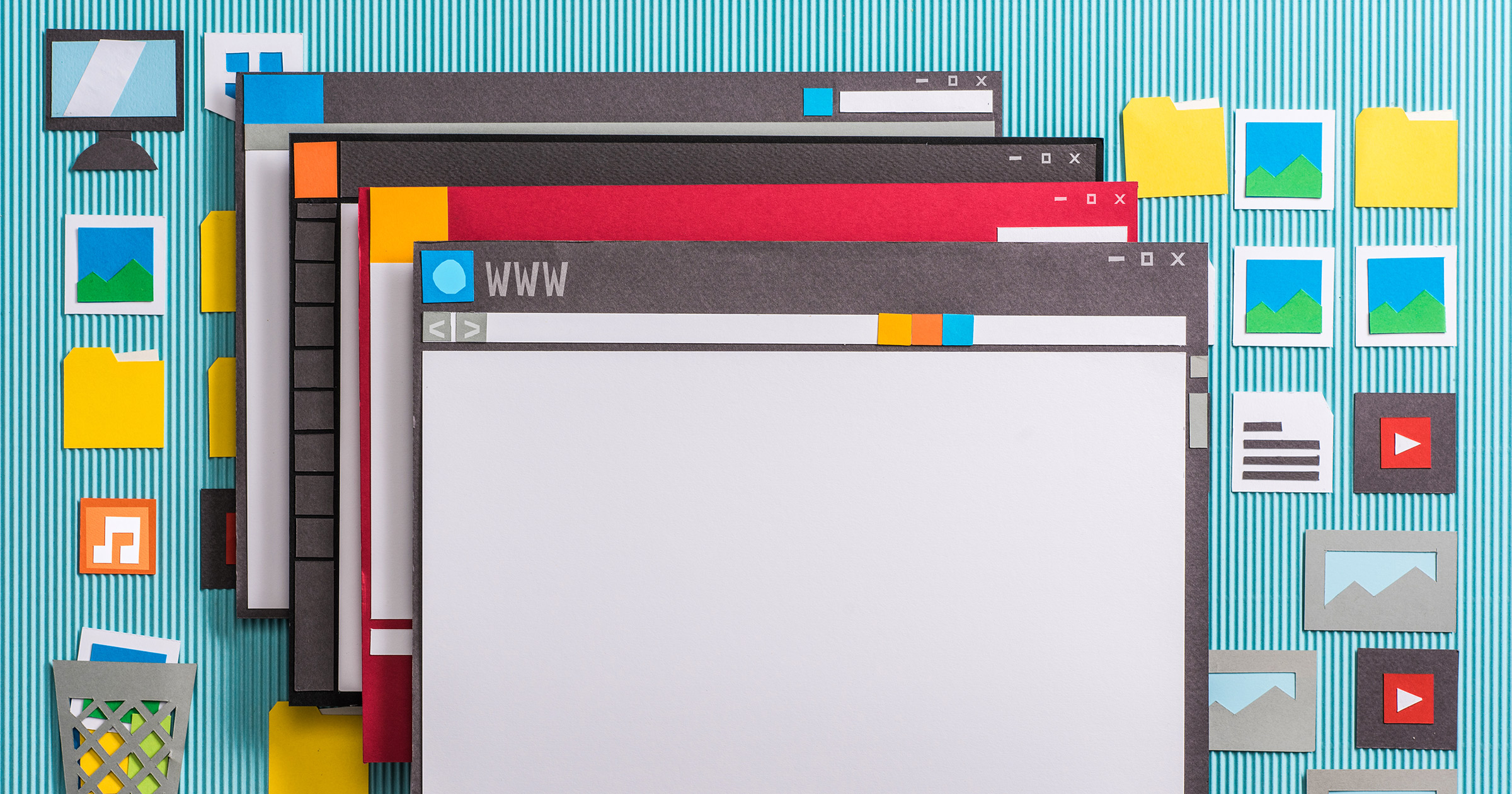Your Website Ecosystem: How Every Element Impacts Success

Your website is one of the most critical marketing tools for your business and often the first impression of your brand. But having a website isn’t enough—it needs to be strategically designed and properly optimized. This is where the concept of a website ecosystem comes into play. It represents the seamless integration of your website’s elements, ensuring they work together to effectively convey your brand’s message and connect with your audience.
What is a Website Ecosystem?
Creating a website involves countless elements, styles, and decisions, but its success depends on how effectively these pieces work together. To achieve this, it’s essential to understand the main components of a website: Design & User Experience (UX), Technical SEO & Web Development, and Content & Media. Together, these form what we call the website ecosystem.
As a website is being created, you need to consider the different pathways users will take as they browse each page and click around. This graphic below from allBusiness showcases something similar called a digital ecosystem, demonstrating how lead generation can work for a website. Setting these ecosystems up effectively means better conversion rates and improved brand presence for your company.
With this in mind, follow along as we outline each individual category involved in a website ecosystem and how they all work together to tell the story of your brand.
Design & User Experience (UX)
The design of your website encompasses its aesthetics—what visitors see and interact with throughout the site as a whole. Design elements can include your navigation bar, fonts and color schemes, pop-ups, how the text and imagery is laid out, forms, and similar features.
It’s critical to design your website with the user experience in mind. Therefore, guiding users on a journey to take whatever required action you want. Think of it similarly to waiting to get on a ride at an amusement park. The lanes are designed in such a way to keep you focused on the end goal which is getting on the rollercoaster. Once you make it to the end of the line, you finally reach the desired goal and take off on the ride. The same goes for your website. It should be easy for users to land on your site, understand how it can help them, and then eventually lead them to the end goal of converting. A conversion could be filling out a contact form, calling for more information, signing up for a service, or whatever type of conversion you have in mind for your business.
Key Design Items to Check
- ADA Compliance: The colors, images, and typography you select all play a key role in the accessibility of your website to people with disabilities. Do the proper checks on your site to make sure it is within compliance for the visually impaired which includes alt tags, adjusting color contrast, multimedia captions, and other similar features.
- Main Navigation Structure: Your site’s navigation moves users to each page and ultimately leads them to the desired goal or off the site entirely. Set yourself up for success and ensure important pages are front and center. Navigating your site should not be a cumbersome or confusing task.
- Fine-Tune The Goal Of Your Site: Define the goal at the start of your website so the design works for you, not against you. Waiting until the end to decide what users should do often leads to costly redesigns and avoidable issues.
Technical SEO & Web Development
The technical side of your website heavily affects SEO and how well people can find you in search engines. It also impacts the overall functionality of your site and if users can physically interact with it. For example, if your site has a large amount of broken links and pages, it will frustrate the user and encourage them to leave. Large numbers of users leaving your site will send a negative signal to Google and other search engines, causing them to devalue your website. This entire scenario is the exact opposite of what you want to happen and is why technical SEO and proper web development should never be ignored.
Other examples of technical SEO include ensuring you set up proper redirects, improving site speed, and establishing an SSL. When your site is properly configured on a technical level, search engines can not only locate it but also index it, making it accessible to other users.
In addition to SEO, focusing on web development at a functional level is critical. If your website’s code is a mess, great design and valuable content won’t save it. Lasting success starts with a well-built, thoroughly tested foundation.
Key Technical & Development Items
- Careful Creation & Organization of HTML headings: The order of your HTML matters and small mistakes can cause large issues which will break certain elements on your site.
- Avoiding Large Assets: Don’t clog down the network of your site by adding images or videos that may be too large. This will cause your site to slow down and negatively affect loading time.
- Utilizing the Proper Tools: A website can be beautifully coded and designed, but that doesn’t always mean it will bring you the right clients. Invest in the right tools so you can monitor the progress and success of your website. Many tools, like Google Analytics, are even free and just take a few minutes to get started.
Content & Media
Content is where you can truly shine bright as a professional. The content you create shows what kind of business you are to both your intended client/customer and also to search engines. Before you craft your content, make an outline on not only the topics you want to exist on your site, but the types of content you want to showcase. This can include service pages, team biographies, educational resource guides, blog posts, toolkits, whitepapers, videos, and more.
Websites do not stay idle. You don’t build it and you’re done. Websites grow as your company grows. Offering a new service? Build a new page to highlight it. Hiring a new employee? Share the news via a blog post. Discover a new industry finding? Create a whitepaper and show how it affects your customer. There are endless possibilities with the types of content you can offer. No matter what you decide to add to your site, always find a way to tie it together in your brand voice.
Beyond written content, websites include many types of media forms like images and video. Incoporating both of these elements will give your website more character and life. These types of media help keep your audience engaged and interested in your company’s story and mission.
Key Content Items to Check
- Build Strong Content for Core Topics: Have enough content that covers each area your business cares most about. In addition to quantity, ensure it answers the main questions your audience is asking and thourougly addresses each major focus area. Your content should provide valuable tips and information that users will be encouraged to share.
- Optimize for SEO: Content is important, but if it isn’t optimized for the web it will be difficult for your clients to find you in search engines. Include your targeted keywords within your service/product pages, blog posts, and core content as a starting point.
- Use High-Quality Visuals: Take the extra time to carefully choose the right imagery and videos for your brand, as it will make a world of difference. Take professional photos of your team, select high-quality stock imagery, and add customized videos that reflect your branding.
Setting Up Your Website Ecosystem
Now that you understand the individual parts, how do they come together in the early planning stages? How do you ensure everything runs smoothly? The key is collaboration. Each element must function well on its own, but real impact happens when everything works in sync. Having the right team behind you not only streamlines the process but also makes it more efficient.
At BrandingCup, we understand the complexities of building a website and how its performance affects your entire business. We’re here to guide you, answer your questions, and help you navigate the tough decisions every step of the way.
Still unsure where to start?
Here are a few questions we get asked frequently:
Why Are Websites So Expensive?
The cost of a website depends on several factors. While AI tools and website generators might make it seem like creating a website is as simple as a few clicks, building a professional, high-performing site requires a team of experts. Unless you have expertise in areas like content creation, digital marketing, web design, and development, partnering with skilled professionals is essential to ensure your site is both functional and effective. Ultimately, the key to success lies in understanding your audience and crafting a site that conveys your message while driving users to choose your brand. This takes time and unfortunately, that means it can come at a cost.
How Do I Know & Understand My Audience?
Understanding your audience is a process that evolves over time. Start by asking yourself key questions about your company’s true goals and the people most likely to connect with them. This reflection is essential as you build your website, which serves as the centerpiece of your brand and a critical tool for reaching your audience effectively. Here are a handful of questions you may want to start thinking about:
- What are their demographics? Age, gender, income, location, etc.
- What are their core values? Lifestyle, their needs, what problem they are trying to solve, etc.
- Where do they consume media? Social networks, forums, Tv/radio, etc.
- What type of content do they like? written vs video, specific genres, etc.
This of course is not a full analysis to determine your target market, but is a starting list to use for brainstorming.
Can I DIY My Website?
Like everything else in life, of course you can do it yourself, but at what cost? Handling a complex process like website creation without consulting a professional can end up hurting you in the end. There are so many options to choose from and within budget like Squarespace, WordPress, and Shopify (BC’s recommended top 3). Find the one that best suits your needs to get you started and don’t go at it alone. Defining your brand is so vital to your overall success. You don’t want to cut corners on your most important marketing tool.
How Do I Get Started With My Website?
As a business owner, tackling a new website can feel overwhelming, but plenty of resources are available to make the process easier. At BrandingCup, our expert team is ready to help, whether you need a brand-new site or a refresh of your existing one. We can refine your brand’s mission or enhance the bold identity you’ve already built. Whatever your goal, we’re here to make it happen.
Need help growing your brand? Reach out today for a free 30-minute consultation. No matter where your business stands, we’ll build a plan together.
